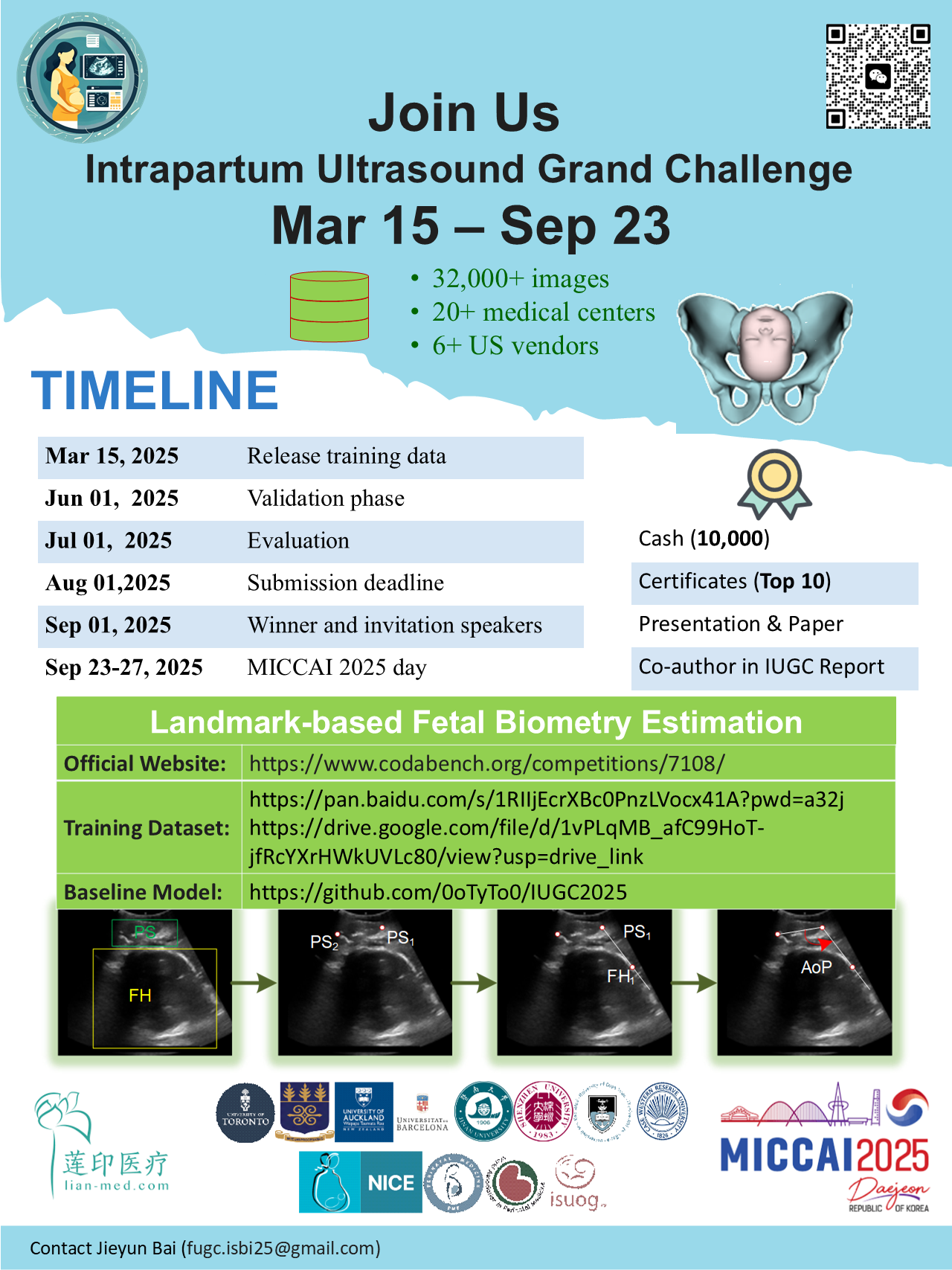MICCAI 2025 Challenge
Published in Bioengineering & Biotechnology

In 2018, the World Health Organization (WHO) published 56 recommendations to improve the quality of intrapartum care and enhance women’s childbirth experiences. In response, the WHO developed the Labour Care Guide (LCG) in 2020, a next-generation tool designed to promote evidence-based, respectful, and woman-centered care during labor and delivery. The LCG was created through expert consultations, primary research with maternity healthcare providers, and usability studies across multiple countries. It serves as a practical tool for monitoring labor progress and maternal and fetal well-being by recording key clinical parameters. When deviations from normal labor progression are detected, the LCG highlights these issues, prompting timely interventions to ensure safe and effective care. Intrapartum ultrasound for labor progression analysis is a crucial examination in labor management. The core operation in this analysis is the identification of landmarks from intrapartum ultrasound images. These landmarks serve as the basis for subsequent qualitative evaluations of angles and distances, which offer valuable diagnostic information regarding labor arrest and influence decisions about the timing and type of intervention. However, obtaining reliable landmark annotations typically demands experienced physicians, and even for proficient obstetricians, manual landmark identification is a time-consuming and labor-intensive endeavor. Consequently, the development of fully automatic and precise landmark localization techniques has been an area of significant and persistent need.
The Intrapartum Ultrasound Grand Challenge (IUGC) 2025 is a collaborative initiative involving the "Deep Learning in Intrapartum Ultrasound Image Analysis" cooperative group and prominent clinical societies such as the International Society of Ultrasound in Obstetrics & Gynecology (ISUOG), the World Association of Perinatal Medicine (WAPM), the Perinatal Medicine Foundation (PMF), and the National Institute for Health and Care-Excellence (NICE). The objective of this partnership is to formulate and promote clinically relevant challenges, thereby maximizing the potential clinical impact of innovative algorithmic contributions from participating teams.
Since its inception at MICCAI 2023, the IUGC has advanced the Pubic Symphysis - Fetal Head Segmentation (PSFHS) by facilitating and benchmarking algorithmic progress and providing high-quality annotated image datasets. In MICCAI 2024, the IUGC expanded to incorporate multiple benchmarks: (1) The analysis objects were extended from images to videos; (2) The tasks were augmented from image segmentation to classification, segmentation, and biometric parameter measurement; (3) The quantitative parameters were increased from one (i.e., Angle of Progression (AOP)) to two (i.e., AOP and head - symphysis distance (HSD)); and (4) The data sources were broadened from being solely from Asia to include Asia, Europe, and Africa. This novel and inventive design has established a benchmarking ecosystem for the systematic comparison of algorithms across diverse tasks and clinical challenges.
The significance of the IUGC 2025 lies in its concentration on addressing the actual clinical assessment of labor progress, covering (1) end-to-end measurements (which are currently indirect measurements based on segmentation results); (2) all fetal descent stations during the childbirth process (comprising five “minus”, one “zero", and three “plus” stations for reliable longitudinal assessment of labor progress); (3) computational tasks (such as regression, detection); and (4) learning methods (semi-supervised, weakly-supervised, and barely-supervised learning). In line with the IUGC's goal of addressing clinical requirements, authoritative and leading clinical organizations have allied with the IUGC. We have extended the IUGC 2024 Challenge from an indirect ultrasound measurement based on segmentation results to an end-to-end measurement based on landmarks. Specifically, we provide 300 labeled cases and 31,421 unlabeled cases in the training set, 100 visible cases for validation, and 501 hidden cases for testing. The targets are the coordinates of three landmarks and the corresponding biometric parameter. In addition to the typical Mean Radial Error (MRE) and the absolute
difference between predicted and manually measured parameters, our evaluation metrics also emphasize inference speed.
In summary, the IUGC 2025 challenge exhibits three primary characteristics:
(1) Task: Employing semi-supervised landmark detection.
(2) Dataset: Curating a large-scale and diverse fetal ultrasound dataset that accounts for all fetal descent stations during the childbirth process. It comprises 28,919 ultrasound images from over 20 medical groups.
(3) Evaluation measures: Focusing on detection accuracy.
(4) Multiple raters independently annotate a subset of test cases to compare algorithmic performance against human expert inter-rater variability.

Please sign in or register for FREE
If you are a registered user on Research Communities by Springer Nature, please sign in